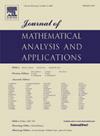一对同态函数的值分布
IF 1.2
3区 数学
Q1 MATHEMATICS
Journal of Mathematical Analysis and Applications
Pub Date : 2024-09-26
DOI:10.1016/j.jmaa.2024.128914
引用次数: 0
摘要
众所周知的皮卡尔定理只说明了一次函数 f 的皮卡尔例外值的情况。在本文中,我们主要考虑两个或三个具有特定类型的一次函数的共同或不同皮卡尔例外值的情况。例如,我们将对一对分形函数 fng(k) 和 gmf(k)的广义皮卡特异值或小函数提供一些新的结果和讨论,这两个函数是海曼猜想中复微分多项式的交叉变体,其中 n、m 为正整数,k≥0。我们特别对 f 和 g 为指数多项式时 fg′ 和 gf′ 的情况作了更详细的说明。本文章由计算机程序翻译,如有差异,请以英文原文为准。
Value distribution of a pair of meromorphic functions
The well-known Picard theorem shows only what happens on the Picard exceptional value of a meromorphic function f. In this paper, we mainly consider what happens on the common or different Picard exceptional values of two or three meromorphic functions with certain types. For instance, we will provide some new results and discussions for the generalized Picard exceptional values or small functions of a pair of meromorphic functions and , these two functions are the crossed variants of the complex differential polynomials in Hayman's conjecture, where n, m are positive integers and . We give more details on the case that and when f and g are exponential polynomials in particular.
求助全文
通过发布文献求助,成功后即可免费获取论文全文。
去求助
来源期刊
CiteScore
2.50
自引率
7.70%
发文量
790
审稿时长
6 months
期刊介绍:
The Journal of Mathematical Analysis and Applications presents papers that treat mathematical analysis and its numerous applications. The journal emphasizes articles devoted to the mathematical treatment of questions arising in physics, chemistry, biology, and engineering, particularly those that stress analytical aspects and novel problems and their solutions.
Papers are sought which employ one or more of the following areas of classical analysis:
• Analytic number theory
• Functional analysis and operator theory
• Real and harmonic analysis
• Complex analysis
• Numerical analysis
• Applied mathematics
• Partial differential equations
• Dynamical systems
• Control and Optimization
• Probability
• Mathematical biology
• Combinatorics
• Mathematical physics.

 求助内容:
求助内容: 应助结果提醒方式:
应助结果提醒方式:


